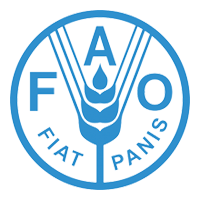Improving Index-Based Drought Insurance in Varying Topography: Evaluating Basis Risk Based on Perceptions of Nicaraguan Hillside Farmers
This paper discusses a methodology to model precipitation indices and premium prices for index-based drought insurance for smallholders. Spatial basis risk, which is borne by the insured, is a problem, especially in variable topography. Also, site-specific drought risk needs to be estimated accurately in order to offer effective insurance cover and ensure financial sustainability of the insurance scheme. We explore farmers' perceptions on drought and spatial climate variability and draw conclusions concerning basis risk with regards to the proposed methodology. There are technically many options to represent natural heterogeneity in index insurance contracts while serving the customer adequately and keeping transaction costs low.
Related Resources
Indicators of soil quality: A South-South development of a methodological guide for linking local and technical knowledge
This methodological guide was initially developed and used in Latin America and the Caribbean-LAC (Honduras, Nicaragua, Colombia, Peru, Venezuela, Dominican Republic), and was later improved during adaptation and use in eastern African (Uganda, Tanzania, Kenya, Ethiopia) through a South-South exchange...
Videos that speak for themselves: when non-extensionists show agricultural videos to large audiences
In 2008, an NGO showed videos about rice to farmers in 19 villages in Benin. A study in 2013 showed that farmers remembered the videos, even after five years had passed. In most of the villages at least some farmers...

Monitoring of Sahiwal and Friesian cattle genetic improvement programmes in Kenya

FairTrade’s theory of change: an evaluation based on the cooperative life cycle framework and mixed methods
This study presents a quasi-experimental analysis of the impact of FairTrade certification on the commercial performance of coffee farmers in Tanzania. In doing so the study emphasises the importance of a well-contextualised theory of change as a basis for evaluation...
A Knowledge Share Fair and a KM4Dev meeting in Colombia, May 2010: involving people in a rich environment of dialogue on agriculture and knowledge management in Latin America and the Caribbean
During May 2010 the International Centre for Tropical Agriculture (CIAT) hosted two exciting events related to knowledge management (KM): The Knowledge Share Fair for Latin America and the Caribbean, funded by the Food and Agriculture Organization of the United Nations...


